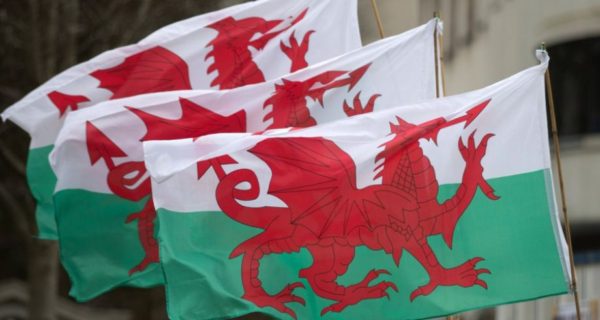Ah March 1st! The wearing of the leek or daffodil or both if you prefer! What? No, wearing of the green is over on the other side of the Irish sea. March 1st is celebrated in Wales as St. David’s Day and it is traditional to wear a leek (even have little plastic ones if you want something a little less whiffy) or with daffodils which start blooming around this time.
So, who was Dwi Sant (St. David)? Well obviously a clergyman born in Wales and lived in the 6th century. The dates I have are between 462 and 515 BCE. David was born into royalty, the House of Ceredigion, in or near South Cardigan and North Pembrokeshire and literature references indicate specifically Caerfai.
He became an ascetic monk and gained fame as a teacher founding several monasteries during his time, the most famous of which is Glyn Rhosyn (Vale of Roses) in Pembrokshire and where St. David’s Cathedral now sits. Supposedly a well-traveled man having gone all the way to the Middle East to learn. It is said that on a particular religious journey to Jerusalem he brought back a stone that still sits on the altar in the Cathedral.
Several tales seem to abound about the man. One is a miracle that when he was preaching to a large gathering of people, they complained that they could not see him, so he threw his handkerchief on the ground and the ground rose up so that everyone could then see him. The wearing of the leeks supposedly came from him encouraging Welsh soldiers to wear leeks on their helmets to help soldiers determine friend from foe. Though the soldiers thought it odd, they did so and then won the day. A poem called the Armes Prydein (The Prophecy of Britain) it was said that the Welsh people would join with other Celtic peoples to repel the Anglo-Saxon invaders under the banner of St. David (A lluman glân Dewi a ddyrchafant). Upon arriving in Wales to claim the English throne during the Wars of the Roses, Henry Tudor (Henry VII) used the banner with the red dragon to rally his fellow Welshmen to his cause, as it was also considered a symbol of St. David.
St. David’s Day is not a national holiday like the other Saint over on the other side of the sea, but it is celebrated fairly heavily non the less. Roast lamb, cawl (and lamb stew), rarebit are popular as is beer and ale (cwrw go iawn) even though the Saint was an ascetic and drank water only. Display proudly the flag of St. David (black with gold cross) or the Baner Y Ddraig Goch (the banner of the red dragon) and do not forget to wear your leek with pride! Repeat the phrase still used that has come down from the Saint: “Gwench y pethau bychain mewn bywyd.” It means: “Do the little things in life.”
So, to March 1st – Dydd Gŵyl Dewi Sant Hapus (Happy St. David’s Day)!

Thank you!